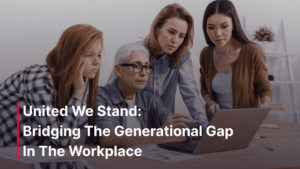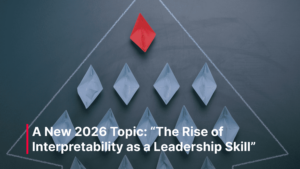Different generations have different ways of communicating, strengths and outlooks on collaboration. And while this has been the case for quite some time, only 8% of companies in the US include age as a strategic pillar of their diversity (DEI) initiatives. At Bytex, we are trying to make the best of our people – and this means playing into the strengths of every colleague when it comes to bridging the generational gap in the workplace.
Recognizing the Added Value Of Age-Diverse Teams
Perhaps the cornerstone of understanding different approaches to work based on generations is acknowledging that age-diverse teams are an incredibly valuable asset for a company, and here are our reasons why:
- Innovation has never been bred out of similarity
- Integrative approaches to problem solving are a win-win strategy
- Diverse skill sets bring better results
- Complementary abilities work better with complementary people
- Networks are as powerful as the diversity of the opportunities they open
- Commitment isn’t the same for everyone – and it shouldn’t be
And although it may look like these fundamental differences come with the territory whenever working with people in general, they tend to have a larger applicability and range of relevance when talking about multiple generations.
But first – that’s not to say that all of the employees belonging to a certain generation are an impersonal blob wearing the same two labels. In fact, when it comes to retention and gaining loyalty in the workplace, the best strategy is to understand and respect the needs and goals of each individual.
However, when teams come into play, workplace dynamics tend to become divided. From closer bonds mainly being formed within a single generation (which is natural afterall, as our preoccupations and our place in life dictate our social needs), to escalating favoritism and side taking situations where like minded people will support the closest idea to their own.
And this is where an integrative approach starts to help. The first thing that leadership should look towards is helping people become aware of their assumptions. This alone is the key to a healthy and collaborative workplace.
Because it works as a mutually beneficial slippery slope that needs the right push at the right time. There is no such thing as bias-free human being. And oftentimes, those with the most biases are the ones most unaware of them. This is why the first push towards the collaborative slippery slope is acknowledging that we each come to the table as the sum total of our experiences, and not as a tabula rasa, ready to be challenged super human.
Once identified, these age bises can be fought against through the individual effort of constantly adjusting our perspective based on the individual instances we’re faced with.
Embracing Differences Instead Of Fighting Them
However invested we may become in trying to merge right into the team we’re working with, perfect heterogeneity is not a thing. If you’re trying to imagine building the perfect sphere that will move into whichever direction it needs taking, you’ve already lost this battle. Instead, functionally diverse teams work more like a unique cog, each element with its own bumps and dents and incremental differences that make the clock run flawlessly.
First of all, there’s the employee on employee relationship that has to be addressed.
Belonging to a different generation can bring to the table not just different sets of skills, but also different values. When these collide, you might have a conflict on your hands. However, if your employees have the soft skills to recognize and understand their own biases, bridging the generational gap is just a matter of will.
We’re not saying that results will occur within days. It’s definitely a process for your employees and a perpetual commitment from your part, as a company, to facilitate the best communication processes. At Bytex, we don’t shy away from different resources out there, and we openly embrace any kind of soft skills development, as this dictates the internal dynamics of our teams – which we think is a business critical area of development.
Then there’s the manager to employee relationship.
Whether it is through a two-way mentorship program, or through constantly taking the pulse of the team, we believe that managers should always prioritize communication. And it’s not just about age differences, although it applies here as well.
Making respect the front and center of every workplace interaction goes a long way in paving the road to healthy practices. As a manager, you should be the first to encourage open communication not just between your team members, but also between yourself and every single one of your colleagues.
Where To Start?
Age differences have a huge impact on workplace dynamics, and the first step is always becoming aware of this, especially since these differences don’t have to be huge in order to profoundly impact how your colleagues interact, what they prioritize and what skills they bring best to the table. Bridging the generational gap is about accountability and constant effort, but it’s definitely a key area to focus on as a manager.


